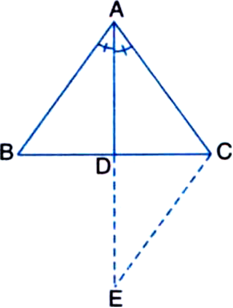Ask questions which are clear, concise and easy to understand.
Ask QuestionPosted by Faeem Saifi 6 years, 3 months ago
- 3 answers
Riddhi Kamde 6 years, 3 months ago
Posted by Kulsoom Rizvi 6 years, 3 months ago
- 0 answers
Posted by Owais Pathan 6 years, 3 months ago
- 0 answers
Posted by Shashi Rana 6 years, 3 months ago
- 1 answers
Posted by Naman Tomar 6 years, 3 months ago
- 0 answers
Posted by Vanshi Ka 6 years, 3 months ago
- 2 answers
Posted by Rajat Khandelwal 6 years, 3 months ago
- 0 answers
Posted by Pinankee Patel 6 years, 3 months ago
- 0 answers
Posted by Swapna Tripathydash 6 years, 3 months ago
- 0 answers
Posted by Simran Rajput 6 years, 3 months ago
- 0 answers
Posted by Shruthi Shirgaonkar 6 years, 3 months ago
- 0 answers
Posted by Rakshit Goyal 6 years, 3 months ago
- 3 answers
Rishav Jha 6 years, 3 months ago
Posted by Sunny Kumar 6 years, 3 months ago
- 6 answers
Posted by Pankaj Patel 6 years, 3 months ago
- 3 answers
Posted by Sonam Sonam 6 years, 3 months ago
- 1 answers
Posted by Kanishka Dodwal 6 years, 3 months ago
- 0 answers
Posted by Akku Verma 6 years, 3 months ago
- 0 answers
Posted by Rohit Mahto 6 years, 3 months ago
- 1 answers
Posted by Rashmi Gupta 6 years, 3 months ago
- 4 answers
Posted by Sourabh Shukla 6 years, 3 months ago
- 2 answers
Posted by Technical Guruji 6 years, 3 months ago
- 8 answers
Posted by Karan Singh 6 years, 3 months ago
- 7 answers
Posted by Shivam Sharma 6 years, 3 months ago
- 0 answers
Posted by Hassan Zemo 6 years, 3 months ago
- 1 answers
Posted by Meenu Gautam 6 years, 3 months ago
- 3 answers
Posted by Kushal Shah 6 years, 3 months ago
- 1 answers
Sia ? 6 years, 3 months ago

Given: In a {tex}\triangle{/tex}ABC, consider AD be the bisector of {tex}\angle{/tex}A which meets BC in D such that BD = DC.
To Prove: {tex}\triangle{/tex}ABC is an isosceles triangle i.e. AB = AC.
Construction: Produce AD to E such that AD=DE and then join CE.
Proof: In {tex}\Delta ABD \;and \;\Delta ECD,{/tex} we have
BD = CD [Given]
AD = ED [By construction]
and {tex}\angle{/tex}ADB = {tex}\angle{/tex}EDC [Vertically opposite angles]
Therefore, {tex}\Delta ABD=\Delta ECD{/tex} [SAS congruence criterion]
So, AB = EC [Corresponding parts of congruent triangles are congruent] ---- (i)
and {tex}\angle{/tex}BAD = {tex}\angle{/tex}CED [Corresponding parts of congruent triangles are congruent] ---- (ii)
Also, {tex}\angle{/tex}BAD = {tex}\angle{/tex}CAD [Given] ---- (iii)
Therefore, From (ii) and (iii) we get
{tex}\angle{/tex}CAD = {tex}\angle{/tex}CED
So, AC = EC [Sides opposite to angles are equal]....... (iv)
From (i) and (iv), we get
AB = AC
{tex}\therefore{/tex} {tex}\triangle{/tex}ABC is an isosceles triangle.

myCBSEguide
Trusted by 1 Crore+ Students

Test Generator
Create papers online. It's FREE.

CUET Mock Tests
75,000+ questions to practice only on myCBSEguide app
 myCBSEguide
myCBSEguide
Harshit Garg 6 years, 3 months ago
0Thank You